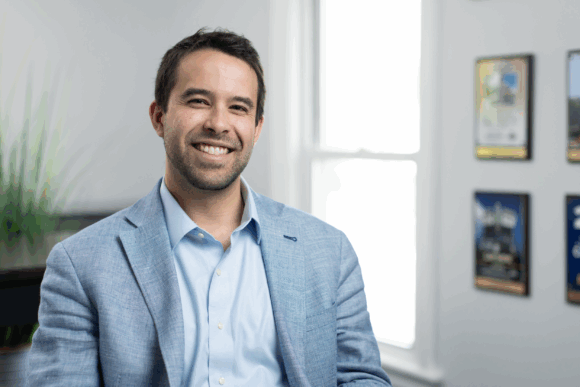Few investment options attract more newbie investors than technology stocks. Exciting stories abound, and the volatility of this “asset class” reflects the constantly changing forecasts of future growth potential. (Value stocks, on the other hand, are less volatile because most of the potential is being realized in the present.) Institutional investors are not immune to these attractions, and that became apparent when BICO Group (BICO ST) first had their IPO under the name CELLINK back in 2016 which was more than 1,070% over-subscribed. Today, the three founders who created this 3D bioprinting darling have all exited leaving investors wondering what the future looks like for this $270 million company.
No More Founders
“Without them, the company would not have existed,” said the Chairman of the Board when announcing that the company’s two remaining founders were shown the door. Understatement of the year. The third founder, who occupied the role of CFO, was cut loose from the company several years ago which leaves investors wondering what the meaning of all this is. Why would three founders allow themselves to be kicked out of their own company?
At least in two cases, the answer probably lies in the press release announcing their departure and the below chart.

Erik Gatenholm is the company’s largest shareholder and was the CEO up until November when he was replaced. Given his large ownership stake, he’s motivated to act in the best interest of the company. So is Hector Martinez, the second largest shareholder and CTO whose exit was just announced. Both these gentlemen probably agreed with the Board that their departures were better for the share price in the long run.
The press release announcing this news referred to an “external whistleblower investigation” which probed “the company’s aggressive sales culture during the years 2017-2021.” The conclusion was that “no crime was found” which somehow isn’t reassuring. Looking in from the outside, it’s impossible to conclude anything from this internal turmoil except to hope that the mess has now been cleaned up, then look at the hard numbers to see where the company might go next.
Goals and Metrics
New leadership at the helm means the usual platitudes around “commercial excellence” and “investing in people.” Our focus is on measurable metrics such as organic growth which the company expects to be in the “double digits” going forward. Assuming they won’t be making more acquisitions anytime soon, organic growth just refers to overall revenue growth while “constant currency” removes the impacts of currency fluctuations. Last year’s constant currency organic growth flatlined compared to nearly 14% growth in 2022. The declines were attributed to weaker sales from “instrument-oriented companies mainly attributed to reduced grants within Academic & Research,” coupled with “weak demand from the Diagnostic industry.”

We pay attention to one simple number – overall revenue growth – which was up 6% last year compared to 69% growth in 2022. Clearly, the old macroeconomic headwinds are creating problems for BICO with some segments faring better than others. Below is the year-over-year growth rate for each segment in 2023:
- Bioprinting: +3.5%
- Biosciences: +15.8%
- Bioautomation: -9.5%
It’s time to see if all the frantic acquisitions the company made under the prior leadership can fuel growth. Unfortunately, the value added by these acquisitions isn’t up to expectations, something that’s measured by the $56 million in goodwill impairments that happened last quarter. With $366 million in goodwill remaining on the balance sheet, more impairments could be expected in the future. Since these are largely accounting adjustments, we’re more interested in knowing that the company won’t need to raise cash or debt in the future.
This year’s move to positive operating cash flows – what they refer to as “right sizing” the business – is a positive, and the $82 million in cash on hand should mean they won’t have to raise capital by selling depressed shares or raising debt. That’s another key metric they’re monitoring going forward – net debt / EBITDA – which makes sure they’re capable of servicing the $135 million in debt on their books. Over 2023 they were able to turn three out of four loss-making companies profitable. That implies they’re realizing synergies from the acquisitions, though their divestment of Ginolis (acquired for $69 million) for one euro means that not all eight companies acquired in 2021 added value to the organization.
| Company Name | Country | Description | Amount (USD millions) |
| Qinstruments | Germany | Leader in advanced sample preparation for life sciences research | 67 |
| Biosera | USA | Leading provider of software for automated workflows | 160 |
| Ginolis | Finland | Automated production of diagnostic tests using advanced robots. | 69 |
| Visikol | USA | Offers services in 3D cell culture, 3D tissue imaging, multiplex imaging & digital pathology | 15 |
| MatTek | USA | In vitro-based innovative human tissue models, cell isolation and cell culture. |
65 |
| Nanoscribe | Germany | Develops high-precision 3D printers based on 2PP technology |
58 |
| Discover Echo | USA | Patented and rotating hybrid microscopes | 102 |
| Advanced BioMatrix | USA | 3D research applications such as bioinks within collagen, extracellular matrix proteins, etc. |
16 |
Looking Forward
Our original investment in BICO (back when they were called CELLINK) was a play on 3D Bioprinting. That segment brings in 74% of the company’s consumables which account for 18% of total revenues. After the 2021 acquisition frenzy, 3D printing now accounts for just 29% of total revenues which means we’re getting far less exposure to our target theme. The end result is a company that enjoys good revenue diversification – no single customer accounts for more than 10% of revenues and the United States accounts for 49% of revenues followed by China and Germany at 8% and 6% respectively.
Our recent post mortem on Invitae came to a key conclusion. When a company becomes a turnaround story, your thesis has changed. We still find the consumables-heavy 3D bioprinting franchise attractive along with the laboratory automation segment – 21% of total revenues – despite its declining growth. Intuitively, tomorrow’s labs will be entirely automated, so we’re happy to have that exposure along with bioprinting which means half BICO’s revenues are relevant to our thesis. Now we just need to see growth that’s represents the sort of disruption these technologies seem capable of.
With a simple valuation ratio of close to one (2.86 / 2.55 = 1.12), shares of BICO remain significantly undervalued, at least compared to our catalog average of around six. The market is likely pricing in the internal leadership turmoil that should now be behind them, the overpaying of companies acquired, and the stalled growth. It’s a perfect storm that needs to clear up soon if we’re to believe these problems are temporary.
Conclusion
Aggressive acquisitions haven’t panned out well for BICO Group and the unexpected exit of all three founders points to an objective conclusion of incompetency. The hiring of a new Chief HR Officer and stated commitment to “invest in people” means there are probably more heads rolling internally as the company looks to clean up the mess left behind. Positive operating cash flows are a big positive, and it’s credible to think that last year’s growth hiccup was temporary given the strong growth up until then.
The CEO’s plan to unveil a new strategy this year means she’s not quite done figuring out where all the skeletons are buried in the portfolio of companies she’s acquired. Should BICO Group not be able to achieve their stated goal of double-digit growth this year, we’d be hard pressed to see why they should continue occupying a slot in our own portfolio of companies.








































